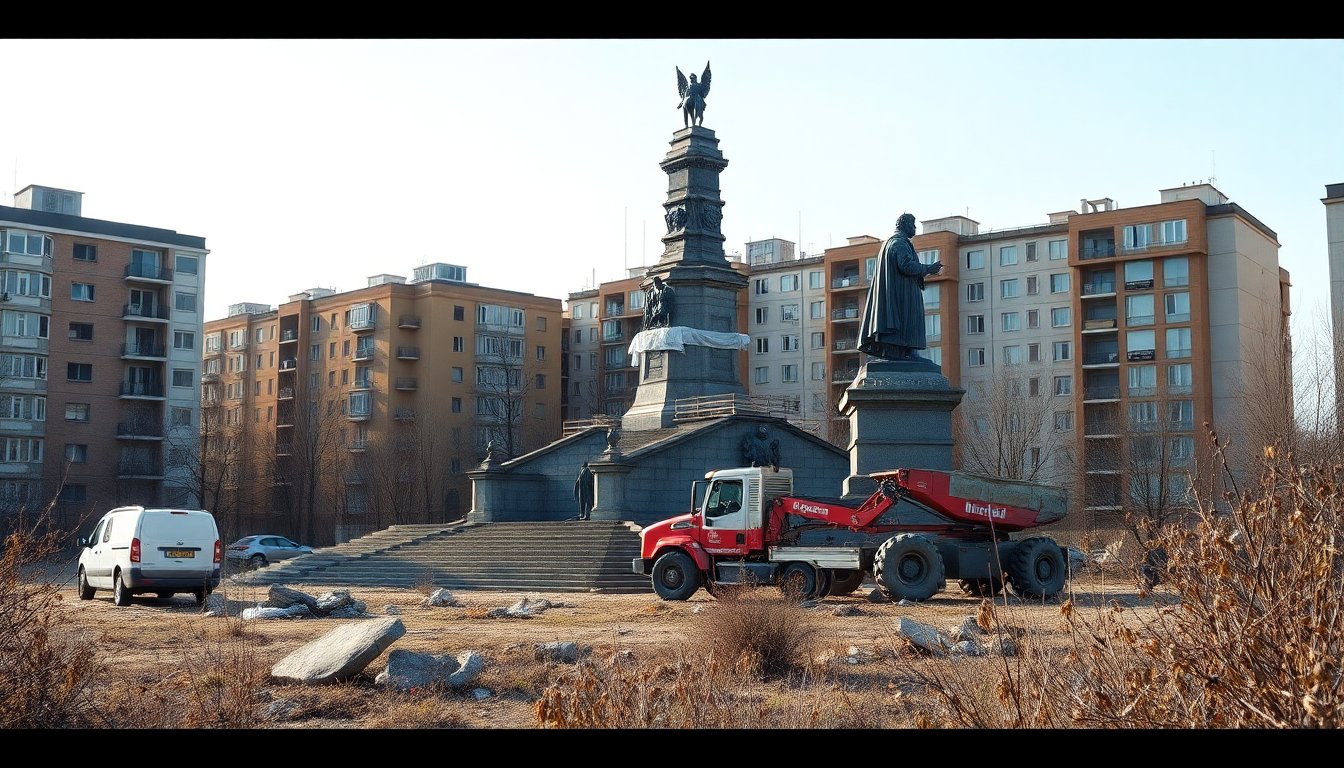Table of Contents
In regions of Ukraine currently under Russian control, a systematic effort is underway to alter the landscape of monuments. This initiative has drawn the attention of historians, particularly Yurii Latysh, who argues that these actions are not random but follow a purposeful ideological agenda. Recent insights from Latysh, published in Novaya Gazeta Europe, reveal the extent and implications of this campaign.
Russia is engaged in a deliberate effort to reshape memorials in these occupied areas, focusing on the restoration of Soviet-era monuments and the construction of new ones that align with a cohesive historical narrative. This narrative positions the ongoing conflict as a direct extension of previous wars, where Russia is depicted as a liberating force.
Reconstructing history through memorials
The newly erected and refurbished monuments prominently feature references to the Great Patriotic War, a term used in Russia to describe the Soviet front during World War II. This historical framing serves as the ideological backbone justifying the Kremlin’s invasion of Ukraine, termed a special military operation. Authorities have taken creative liberties in modifying existing memorials, incorporating elements that reshape their meanings and establish connections between historical events and contemporary justifications.
Case study: Savur-Mohyla memorial
A pertinent example of these transformations can be observed at the Savur-Mohyla memorial in the Donetsk region. Originally constructed in 1967 to commemorate the intense battles of 1943, this site was destroyed in 2014 amidst the conflict preceding Russia’s full-scale invasion. In its place, Russian authorities have constructed a new memorial that resembles the original but also includes tributes to figures from the Donetsk People’s Republic. Today, statues honor both World War II heroes like Lieutenant Hryhoriy Shevchenko alongside contemporary warriors such as Mikhail Tolstykh and Arsen Pavlov. These ceremonies intertwine narratives of the past with ongoing struggles.
Continuity and ideological cleansing
Another significant alteration can be found in the city of Khrustalnyi, situated in Ukraine’s Luhansk region. Here, a Soviet memorial has been updated to include the image of an ancient Rus’ warrior, dating back to 1185, alongside a modern combatant from the current conflict, marked as 2025. This site also showcases a T-72 tank used during the invasion and an eternal flame, echoing the one in Moscow. These adaptations reinforce the notion of a continuous struggle for the Russian homeland across generations.
Cleansing the memorial landscape
In tandem with these overtly militaristic memorials, Russian authorities have systematically removed monuments they deem ideologically incompatible. This includes memorials honoring the victims of the Holodomor, a devastating famine in the 1930s that resulted in millions of Ukrainian deaths, as well as sites commemorating those who suffered under Soviet repression or figures advocating for Ukrainian sovereignty. This campaign of selective erasure aims to eliminate symbols that affirm a distinct Ukrainian identity.
In addition to these confrontational monuments, there are also more subdued tributes, such as the memorial to actor Yevgeny Matveev in his hometown of Kherson. These less aggressive memorials promote a narrative of shared heritage and history between Russia and Ukraine, urging Ukrainians to view their past as intertwined with that of Russia.
The role of the Military-Historical Society
A significant player in this ideological maneuvering is the Russian Military-Historical Society, which oversees the establishment and restoration of memorials. This organization is pivotal in promoting a version of history that aligns with the Kremlin’s narrative. With local branches emerging in occupied regions, the Society actively organizes commemorative events and educational initiatives related to these monuments.
Latysh concludes that the extensive reconfiguration of Ukraine’s memorial landscape represents a large-scale ideological operation aimed at legitimizing Russian governance over these territories. By presenting eastern Ukraine as an integral part of Russia’s narrative, authorities attempt to frame the invasion as a justified act of liberation.


